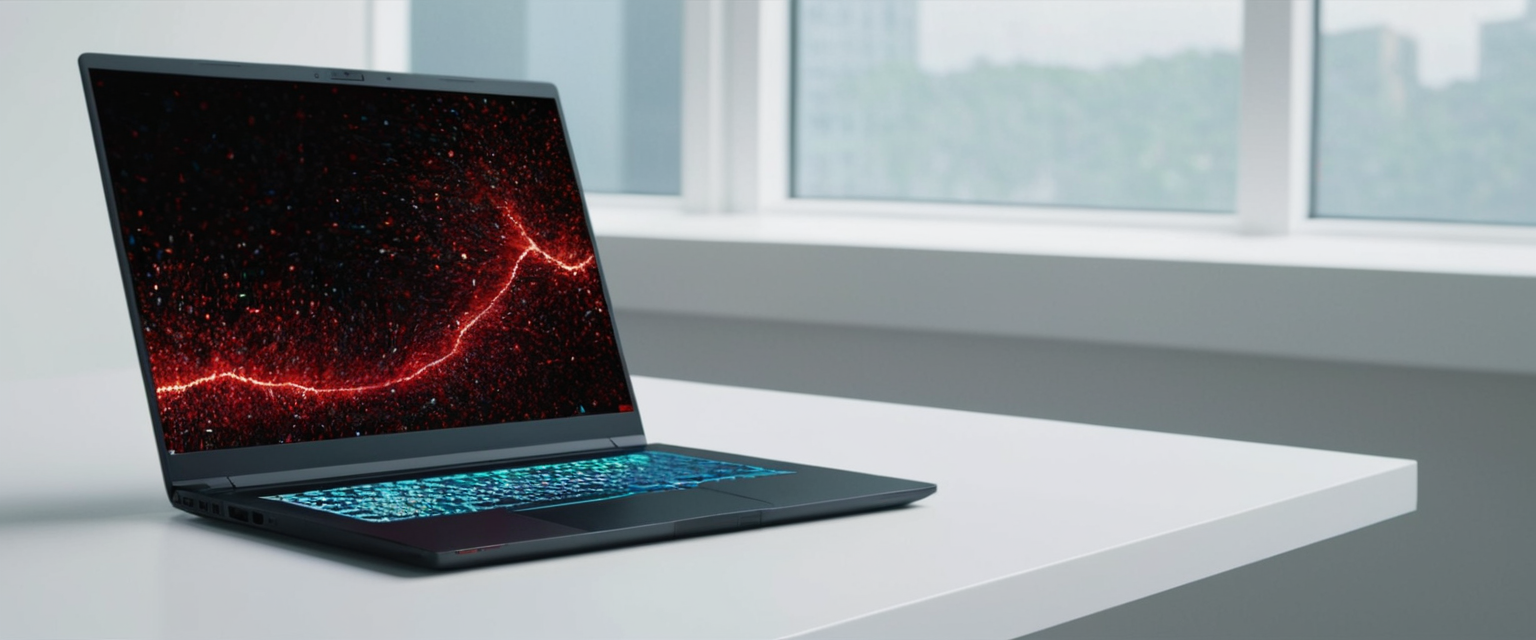
In the vast majority of cases, performing a factory reset will successfully eliminate malware infections from your device, with industry sources indicating effectiveness rates as high as 99 percent. However, this straightforward answer belies a more nuanced reality that requires careful examination. While factory resets represent one of the most powerful tools available for combating malware infections, they are not a universal solution that guarantees complete eradication of all sophisticated threats. The effectiveness of a factory reset depends significantly on the type of malware involved, where it has embedded itself within the system architecture, and the specific methods employed during the reset process itself. Understanding both the capabilities and limitations of factory resets is essential for anyone seeking to remove malware from their devices while maintaining data integrity and system security.
Understanding Factory Resets and the Malware Landscape
A factory reset represents a comprehensive process that restores a device to its original state, essentially returning it to the condition it possessed when first manufactured. This process systematically wipes all personal data, user-installed applications, customized settings, and configurations from the device’s primary storage while reinstalling the original operating system and pre-installed software. For Windows computers, this typically means wiping the hard drive and reinstalling Windows from factory-provided recovery files or cloud sources. On mobile devices like Android phones and iPhones, the factory reset completely erases all user data and custom settings while restoring the device to its factory default configuration. The comprehensiveness of this process makes factory resets theoretically effective at removing most malware, since the vast majority of malicious software becomes embedded in the files, applications, and settings that the factory reset explicitly targets for deletion.
The malware landscape itself has evolved considerably over the past decade, with cybercriminals developing increasingly sophisticated techniques to evade detection and removal. Malware encompasses numerous distinct categories, each with unique characteristics and persistence mechanisms. Common types include viruses, which self-replicate and spread from system to system; worms, which spread through networks without requiring user interaction; trojans, which masquerade as legitimate programs to deceive users into executing them; spyware, designed to monitor user activity and steal sensitive information; adware, which displays unwanted advertisements or redirects users to specific websites; ransomware, which encrypts data and demands payment for decryption; and rootkits, which gain deep system-level access to hide their presence and grant attackers administrative control. Each of these malware types operates differently and may respond differently to factory reset attempts. Understanding these distinctions proves crucial when evaluating whether a factory reset will adequately address a particular infection.
The relationship between factory resets and malware removal is fundamentally tied to where malware stores itself within the device architecture. Standard malware typically resides within user-installed applications, personal files, system files in the main operating system installation, or temporary files and caches created during normal operation. Since factory resets explicitly target all of these locations for deletion and replacement with clean files from the factory installation, most standard malware gets removed during this process. A factory reset effectively clears all programs and system files from the device, leaving it with a clean slate that essentially replicates the device’s state when it first shipped from the manufacturer. This comprehensive wiping provides strong protection against conventional malware threats, which explains why factory resets remain the go-to solution for consumers experiencing severe malware infections.
Effectiveness of Factory Resets Against Common Malware
The empirical evidence supporting factory reset effectiveness comes from extensive real-world experience and extensive testing by cybersecurity professionals. According to research cited in multiple security sources, a factory reset will be sufficient to remove malware in approximately 99 percent of cases. This extraordinarily high success rate applies primarily to standard, garden-variety malware threats including trojans, spyware, and adware that embed themselves in conventional locations within the file system and operating system. For these common threat types, factory resets prove devastatingly effective precisely because they operate by completely replacing the infected operating system and user data with pristine, uninfected copies from the factory installation source.
The process through which factory resets eliminate common malware operates through simple but comprehensive logic. When a factory reset executes, it systematically removes all user-installed applications, which frequently serve as vectors for malware distribution. Simultaneously, it wipes the system file directories, registry entries (on Windows systems), and temporary storage locations where malware typically executes and maintains its presence. Most malware depends on these specific locations to function, persist between reboots, and propagate itself to other files and programs. By eliminating these locations entirely and replacing them with clean copies from the factory installation, factory resets effectively destroy the infrastructure upon which standard malware depends. A user experiencing issues such as frequent pop-up advertisements, unexpected system slowdowns, unusual network activity, or suspicious browser redirects—all common symptoms of standard malware infections—will typically see these problems completely resolve following a thorough factory reset with all files removed.
The mechanics of factory reset effectiveness specifically apply well to malware that has attempted to establish persistence through modification of system files or injection into legitimate applications. Many trojans and other malware variants work by modifying legitimate system executables or by hiding malicious code within downloaded applications. Since factory resets replace all system files with clean originals and remove all downloaded applications entirely, these persistence mechanisms become entirely ineffective. The malware cannot continue functioning without the modified system files or the applications in which it embedded itself, both of which have been completely eliminated. This represents a fundamental advantage of factory resets compared to attempting to manually clean individual files or uninstall specific applications, approaches that frequently fail because they cannot reliably identify and remove every instance of malware or every modified system file.
The effectiveness also extends to malware that attempts to hide itself through various obfuscation and concealment techniques within the normal file system. Files hidden as system files, disguised with misleading names, or embedded in unexpected directories all fall victim to the factory reset process, simply because the process doesn’t selectively preserve specific files—it removes everything except the factory-provided core system files and then restores all system software from clean factory sources. This “brute force” approach to malware removal proves remarkably effective precisely because it doesn’t attempt to distinguish between infected and clean files; instead, it eliminates the entire user file system and operating system and replaces them with known-clean versions.
Advanced Malware That Can Survive Factory Resets
Despite the impressive 99 percent effectiveness rate, the remaining approximately one percent of malware cases involve threats sufficiently advanced to potentially survive standard factory reset procedures. These advanced threats represent some of the most dangerous and sophisticated malware in existence, employing techniques that target system components beyond the scope of what traditional factory resets can address. Understanding these exceptions proves critically important for anyone dealing with particularly severe malware infections or for security professionals managing high-value targets.
The most significant category of malware capable of surviving factory resets comprises rootkits and bootkits, sophisticated malware programs that operate at the deepest levels of system architecture. Rootkits gain administrator-level or “root” access to the operating system, typically at the kernel level, enabling them to hide their presence from security software and maintain control even after attempts to remove them. They accomplish this by modifying core operating system functions and security mechanisms, making them essentially invisible to standard security tools and removal procedures. Bootkits represent an even more dangerous variant that specifically targets the boot process itself, attempting to compromise the system before the operating system fully loads. Both rootkits and bootkits can potentially survive factory resets because they embed themselves in system firmware, the BIOS or UEFI (Unified Extensible Firmware Interface), or other low-level system components that exist outside the scope of what a standard factory reset addresses.
Firmware-level malware represents another critical exception to factory reset effectiveness. The firmware comprises the fundamental software that runs at the hardware level before the operating system loads, managing access to hardware components and controlling the boot process. Some advanced malware successfully infects the firmware, BIOS, or UEFI on victim systems, establishing persistence at a level fundamentally lower than the operating system itself. When a factory reset reinstalls the operating system, any malware embedded in the firmware continues running silently in the background, prepared to reinfect the fresh operating system installation the moment the system boots. This represents a particularly insidious threat vector because firmware malware persists completely invisible to standard security tools and invisible to the user, continuing its work underneath all operating system-level defenses. According to research on UEFI bootkits, malware operating at this level can survive OS reinstallations and even hard drive replacements because it operates fundamentally outside the hard drive storage system.
The recovery partition represents another location where malware can establish persistence immune to standard factory resets. Many manufacturers, particularly on Windows computers, provision a special hidden partition on the hard drive containing a backup copy of the operating system, drivers, and manufacturer software to facilitate faster recovery procedures. This recovery partition remains separate from the main system partition and typically does not get wiped or modified during a standard factory reset process. If malware manages to infect this recovery partition before the reset occurs, the malware will remain present even after the reset completes, positioned to reinfect the fresh system when conditions permit. The recovery partition essentially provides malware with a protected staging area from which to relaunch attacks after a factory reset fails to address it.
One notable real-world example illustrates the persistence capabilities of advanced malware. The xHelper malware, discovered targeting Android devices and affecting approximately 45,000 users, demonstrated the ability to survive standard factory resets and even multiple factory reset attempts. This malware disguised itself as a cleaner and optimization application, but after installation it would hide itself and establish persistence mechanisms that enabled it to reinstall itself even after users performed factory resets. Security researchers eventually determined that xHelper achieved this persistence by hiding encrypted APK (Android Package) files in hidden directories that remained untouched during standard factory resets, unlike user-visible files which the reset removed. The malware would drop various trojan downloaders that could trigger its reinstallation from these hidden storage locations, enabling it to reinfect the device within hours of a factory reset. This case demonstrates how sufficiently sophisticated malware can exploit architectural features of device storage systems that standard factory resets do not address, enabling it to survive even comprehensive reset procedures.
Why Some Malware Persists After Reset: Root Causes
Understanding precisely why some malware survives factory resets requires examining the specific mechanisms through which these advanced threats establish persistence and the architectural limitations of factory reset procedures. The fundamental issue stems from a mismatch between what factory resets actually address and the full scope of system components where malware can embed itself.
Infected backup files represent the most common reason why malware returns after a seemingly successful factory reset. Users performing a factory reset typically face a critical decision point regarding whether to preserve and restore personal files such as documents, photos, and other data, or whether to delete everything and start completely fresh. Many users, understandably reluctant to lose years of personal photos or important documents, choose to create backups of their files before performing the reset. However, if malware has already infected files within these backups—a distinct possibility if the backup was created after the malware infection occurred—restoring the backup after the factory reset directly reintroduces the infected files into the freshly cleaned system. This scenario essentially wastes the benefits of the factory reset, as users unknowingly restore the malware they just worked to eliminate. Security experts consistently emphasize that users must scan backup files with trusted antivirus software before restoring them, or preferably restore only backups created before the malware infection occurred.
Connected external devices provide another common vector through which malware can escape the effects of a factory reset. A factory reset only addresses the device being reset; it has no effect on external USB drives, external hard drives, network-attached storage devices, printers, routers, or other peripherals connected to the system. If malware has infected any of these external devices, reconnecting them to the newly reset device after the factory reset completes will simply reinfect the clean system. USB drives prove particularly problematic in this regard, as malware can easily propagate to any USB device connected to an infected system, and then spread to any other system to which that USB drive subsequently connects. Users who suspect malware infections should disconnect all external devices before performing a factory reset and either thoroughly scan these devices with antivirus software or avoid reconnecting them until confirming they are malware-free.
Protect Your Digital Life with Activate Security
Get 14 powerful security tools in one comprehensive suite. VPN, antivirus, password manager, dark web monitoring, and more.
Get Protected NowCompromised online accounts represent a different category of persistence that factory resets cannot address. If cybercriminals have compromised a user’s email account, cloud storage account, or other online services connected to the device, they retain access through these accounts even after a factory reset eliminates all local malware. When the reset device reconnects to these services and syncs with cloud storage or email, malware stored in the cloud infrastructure or downloaded from compromised account settings can reinfect the newly cleaned system. This threat vector requires addressing the online account compromise separately through password changes, enabling two-factor authentication, and reviewing account security settings to remove unauthorized access methods—all steps beyond the scope of a factory reset on the physical device.
Zero-day vulnerabilities and unpatched security flaws represent another scenario enabling malware to resurface after a factory reset. If a user encountered malware through a zero-day vulnerability—a previously unknown security flaw that developers have not yet created patches to address—simply performing a factory reset and restoring Windows or the mobile OS may not address the underlying vulnerability. The fresh operating system installation contains the same unpatched vulnerability that enabled the original infection. If the user connects to the internet without first updating the operating system and installing security patches, malware exploiting the same zero-day vulnerability can reinfect the device immediately. This situation underscores the importance of applying system updates and security patches after a factory reset before resuming normal internet usage.
Network vulnerabilities also merit consideration when evaluating malware persistence after factory reset. If cybercriminals gained initial access to a device through a compromised network, router, or network-level vulnerability rather than through the device itself, performing a factory reset of that one device will not resolve the underlying network security problem. The network infrastructure remains compromised, potentially enabling malware to reinfect the reset device once it reconnects to the compromised network. In corporate or enterprise environments with shared networks, this scenario necessitates comprehensive remediation of network security before re-introducing cleaned devices to the network environment.

Platform-Specific Considerations and Implementation Approaches
The effectiveness and implementation of factory resets varies significantly across different operating systems and device types, reflecting differences in system architecture, storage management, and reset procedures available on each platform. These platform-specific variations substantially impact both the likelihood of complete malware removal and the practical steps users should follow to maximize the effectiveness of factory resets.
Windows Computers
Windows computers present particular complexity regarding factory reset malware removal because Windows systems typically offer multiple reset options with substantially different effectiveness levels. Windows 10 and Windows 11 users can choose between performing a factory reset using local files already stored on the computer or using a cloud download option that downloads fresh Windows installation files directly from Microsoft’s servers. The cloud download approach provides superior malware removal assurance because the Windows files being installed come directly from Microsoft’s servers rather than potentially compromised files stored locally on the infected system. When performing a factory reset using local files, there exists a theoretical risk that malware could potentially corrupt or remain present in the local Windows installation files themselves, though this remains relatively uncommon.
Windows systems also often include a recovery partition containing backup copies of the operating system, drivers, and manufacturer software. If malware manages to infect this recovery partition before the factory reset, it could potentially survive the reset and reinfect the system afterward. For maximum security when dealing with suspected malware, experts recommend performing a clean installation of Windows from bootable installation media rather than using the built-in “Reset this PC” function, which relies on recovery partitions that could potentially harbor malware. Creating bootable Windows installation media using Microsoft’s Media Creation Tool and performing a complete fresh installation from that media, while explicitly deleting all existing partitions during the installation process, provides the highest confidence that all traces of malware have been eliminated. This approach ensures that no aspect of the original system, including potentially infected recovery partitions, remains to harbor malware.
Secondary drives and external storage devices require special attention on Windows systems because a standard factory reset typically applies only to the primary system drive where Windows is installed, usually the C: drive. Any malware present on secondary internal drives, external hard drives, or USB drives will survive the factory reset applied to the primary drive. Users should either disconnect all secondary and external storage devices before performing the factory reset or thoroughly scan them for malware before reconnecting them to the cleaned system.
macOS Systems
MacOS factory resets, sometimes called “erasing and reinstalling,” work by completely wiping all contents from the device and reinstalling the original macOS operating system. Modern Macs have significantly simplified the reset procedure compared to older systems. Users on modern Macs can simply navigate to System Settings, select General, choose Transfer or Reset, and select “Erase all Contents and Settings”. This process completely wipes the drive and reinstalls macOS cleanly. However, security experts emphasize several important precautions specific to macOS devices. Before resetting, users should disable Find My Mac and FileVault encryption, as these features can interfere with the reset process or prevent proper device access afterward. Additionally, users should note activation codes and licensing information for any purchased software they intend to reinstall after the reset completes.
One particularly important consideration for macOS users involves the choice of whether to restore from an iCloud backup after the factory reset. If the iCloud backup was created after malware infection occurred, restoring from that backup will directly reintroduce the infected files into the freshly cleaned system. Security guidance consistently recommends that macOS users do not restore from iCloud backups unless they can confirm with certainty when the malware infection began and possess a backup dated before that infection. This frequently impractical requirement leads many security experts to recommend that users simply accept the loss of data rather than risk reinfecting a newly cleaned system.
MacBooks merit special attention regarding firmware and rootkit malware because Apple’s architecture makes it quite difficult for malware to establish persistence at the firmware level, though not impossible. If a macOS device has been compromised with firmware-level or rootkit malware, a standard factory reset may prove insufficient, and professional intervention from Apple’s support services or certified technicians may become necessary. The Macbook’s tightly controlled system architecture generally provides better protection against firmware-level threats compared to Windows systems, but sophisticated attackers targeting high-value individuals or organizations could potentially develop macOS firmware malware if they possessed sufficient resources.
Mobile Devices: Android and iOS
Mobile device factory resets operate on principles similar to computer resets but with important distinctions reflecting mobile OS architecture. Android factory resets, accessed through Settings > System > Reset > Factory Data Reset, completely wipe all personal data, apps, and custom settings while restoring the device to its original factory state. This process removes most malware very effectively because standard Android malware typically resides within installed apps or personal files that the factory reset explicitly targets.
However, Android devices can host particularly persistent malware varieties. The xHelper malware case demonstrates how even a factory reset can prove insufficient against sophisticated Android malware. Additionally, some Android malware manages to hide in locations that survive standard factory resets, potentially reinfecting the device after reset. For maximum security with Android devices suspected of hosting malware, some security experts recommend re-flashing the device with a fresh firmware image downloaded from the manufacturer’s official website, a process more complex than a standard factory reset but providing greater assurance of complete malware elimination.
iOS devices, including iPhones and iPads, receive strong protection from malware through Apple’s tightly controlled App Store, restriction on app distribution outside official channels (except for jailbroken devices), and comprehensive system security architecture. Factory resets on iOS devices work by erasing all contents and settings, completely wiping the device and restoring it to its factory state. The process requires navigating to Settings > General > Transfer or Reset iPhone, then selecting “Erase All Content and Settings“. Like macOS systems, iOS users should disable Find My and other security features before resetting, and should avoid restoring from iCloud backups unless the backup predates any suspected malware infection. iOS’s restrictive architecture means that malware surviving factory resets remains quite rare compared to Android or Windows, though the threat is not zero, particularly for jailbroken devices.

Beyond Factory Resets: Pre-Reset Malware Removal Attempts
While factory resets provide powerful malware removal capabilities as a last resort, security experts consistently emphasize that factory resets should not be the first remediation approach. Before resorting to a factory reset with its associated data loss risks and inconvenience, users should attempt several less destructive malware removal methods that frequently prove successful, particularly for standard malware infections.
Running comprehensive antivirus and anti-malware scans using reputable security software represents the first step most professionals recommend. Tools such as Malwarebytes, Windows Defender, Norton, or Bitdefender can scan the entire system and identify malware that the user can then remove while preserving personal files and system configurations. Performing a deep, full-system scan rather than a quick scan proves important, as quick scans may miss malware hiding in less-frequently-accessed system areas. If multiple antivirus tools are used sequentially, they may identify threats that others missed, providing additional confidence in the malware removal.
Removing suspicious applications manually can eliminate malware that embedded itself within downloaded apps. Users should review their installed applications, identify any they do not recognize or do not remember installing, and uninstall these suspicious apps immediately. Many malware applications deliberately masquerade with confusing names or hide within system folders to avoid user detection, so careful examination of application lists becomes important. For Android devices, users can verify which apps have access to sensitive capabilities like camera, microphone, location, and contact lists, and can revoke permissions for apps that should not require such access.
Booting into Safe Mode provides another valuable malware removal technique that disables most user-installed software and many system processes, often preventing malware from running. In Safe Mode, users can run antivirus scans and manually delete malware files without the malware actively defending itself or replicating. This can prove surprisingly effective for standard malware infections where the malware lacks sophisticated anti-removal capabilities.
Clearing browser caches, cookies, and browsing history removes temporary files where malware may hide and eliminates malicious browser modifications, redirects, or injected advertisements. Browser-based malware frequently uses caches and temporary files to maintain persistence, so thoroughly clearing these locations can eliminate browser-specific malware.
For devices that have infected backup files, users can restore files selectively from backups, carefully avoiding any files or folders that appear suspicious or that the antivirus software flagged as infected. Rather than restoring the entire backup at once, users can restore files individually while scanning each file for malware before actually opening or executing it. This tedious process proves far superior to restoring an entire infected backup at once and then attempting to remove pervasive malware.
Best Practices for Maximizing Factory Reset Effectiveness
When a factory reset becomes necessary, following several specific best practices substantially increases the likelihood of complete malware removal and reduces the risk of reinfection. These practices address the common scenarios through which malware manages to survive or return after reset procedures.
Before initiating any factory reset, users must create backups of important files they wish to preserve. However, these backups themselves must be scanned with reputable antivirus software before the factory reset begins, ensuring that backups do not contain the very malware the user is attempting to remove. Scanning backups with multiple antivirus tools provides additional confidence that malware hiding from one tool’s detection may be identified by another. Users should save backups to external drives or cloud storage physically disconnected from the device undergoing reset, as this prevents malware potentially remaining on the device from infecting the backup files during the reset process.
All external devices including USB drives, external hard drives, printers, routers, and other peripherals should be disconnected from the device before beginning the factory reset. This prevents the reset process from inadvertently infecting these devices and prevents them from reinfecting the system after the reset completes. After reset, users should not reconnect these devices until they have scanned them for malware using trusted antivirus software.
Choosing the factory reset method that provides the strongest malware assurance proves important. For Windows systems, performing a clean installation from bootable media while explicitly deleting all partitions, rather than using the built-in Reset this PC function, provides superior malware assurance. For those using Reset this PC, selecting the “Remove Everything” option combined with Cloud Download rather than Local files provides better assurance. For mobile devices, accepting that the standard factory reset may not address particularly sophisticated malware and considering professional re-flashing services for high-risk scenarios helps ensure complete malware elimination.
After the factory reset completes and the system begins booting up, users should delay reconnecting to the internet until completing initial setup and applying all available system updates. This prevents zero-day exploits or unpatched vulnerabilities from immediately reinfecting the freshly cleaned system. Only after all system updates have installed and the device remains offline for an additional full system scan using fresh antivirus software should users restore backup files and reconnect to the internet.
Restoring from backups should follow verification that the backups remain uninfected. Users should restore files gradually in batches rather than all at once, allowing antivirus software to scan files as they are restored. Alternatively, users can restore backups only after waiting several days and confirming no malware symptoms reappear on the freshly reset device, as this waiting period provides strong evidence that the reset successfully eliminated the malware.
For iOS devices, deliberately avoiding restoration from iCloud backups created after the suspected malware infection provides maximum security assurance. This represents a painful choice requiring acceptance of data loss, but prevents reinfection of the freshly cleaned device. Users who cannot accept this data loss can attempt to restore from backups created before the suspected infection date, though determining this date with certainty often proves impossible.
Emerging Threats and Future Considerations
The malware landscape continues evolving in ways that may render some current factory reset approaches less effective in the future. Security researchers have identified concerning trends that suggest malware developers increasingly pursue sophisticated persistence mechanisms targeting system components that standard factory resets do not address.
Firmware-level and UEFI-based malware represents a growing concern that currently remains relatively rare but could increase in prevalence if discovered by wider malware developer communities. Real-world examples of sophisticated UEFI bootkits developed by state-sponsored actors or specialized firms demonstrate that the technical capability to infect firmware exists. As these techniques become more widely known and potentially more affordable to develop, malware based on firmware exploitation may become more common, representing a threat category that factory resets cannot reliably address. This prospect argues for the ongoing importance of hardware-level security measures including Secure Boot, UEFI firmware updates, and potentially even BIOS flashing procedures to address firmware malware.
Hidden partition and storage recovery techniques continue evolving as malware developers discover new ways to exploit device storage architecture. The xHelper malware case demonstrated how malware could survive factory resets through hidden storage locations, and sophisticated attackers may develop increasingly clever variations on this approach. This trend suggests that complete partition deletion and fresh operating system installation from trusted external media may become increasingly important best practices for users facing particularly sophisticated threats.
Supply chain compromises represent another emerging concern that factory resets cannot address. If devices arrive from manufacturers with pre-installed malware, or if malware is introduced during the manufacturing or distribution process, standard factory resets simply restore these compromises. Users should remain vigilant regarding suspicious device behavior immediately upon first use, before any intentional malware infection could have occurred. Devices exhibiting such symptoms require professional investigation or replacement rather than standard troubleshooting approaches.
Your Malware-Free Future: The Reset’s Verdict
Factory resets represent a powerful and highly effective tool for eliminating malware infections from computers and mobile devices, with documented effectiveness in approximately 99 percent of cases. For the vast majority of users experiencing standard malware infections caused by trojans, spyware, adware, and similar threats, a properly executed factory reset while removing all personal files will successfully eliminate the malware and restore the device to a clean state. This exceptional effectiveness rate explains why factory resets remain the gold standard recommendation from security professionals as a last resort for severe malware infections.
However, users must understand that this high effectiveness rate does not mean factory resets guarantee complete, absolute malware eradication in 100 percent of scenarios. Advanced malware threats including sophisticated rootkits, bootkits, and firmware-level malware can potentially survive standard factory reset procedures by establishing persistence at system levels below what factory resets address. Additionally, factors external to the device itself including infected backup files, compromised connected devices, unpatched security vulnerabilities, and compromised online accounts can enable malware to return after a seemingly successful factory reset.
Maximizing the probability of complete malware removal requires understanding both the capabilities and limitations of factory resets, carefully following best practices that address common reinfection vectors, and selecting factory reset approaches specifically designed to provide maximum malware assurance. Users should verify backup files are malware-free before factory reset, disconnect all external devices, choose cloud-based installation methods when available, apply all system updates immediately after reset, and avoid restoring potentially infected backup files unless certain they predate the malware infection. These practices, combined with the inherent power of factory resets, provide users with excellent prospects for successfully eliminating malware infections.
Looking forward, the evolving malware landscape suggests that factory resets may face increasing challenges from sophisticated threats targeting firmware and hidden system components. However, for standard consumer-grade malware infections, factory resets will likely remain highly effective tools for many years to come. Users experiencing suspected malware infections should first attempt less destructive removal methods using reputable antivirus software, reserving factory resets for situations where these initial approaches fail to resolve the infection. When factory resets become necessary, careful attention to the detailed best practices outlined in security guidance will substantially increase the likelihood of success and minimize the risk of reinfection following the reset process.






